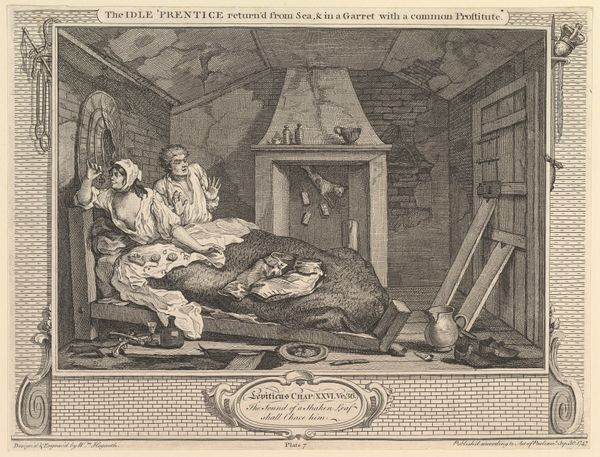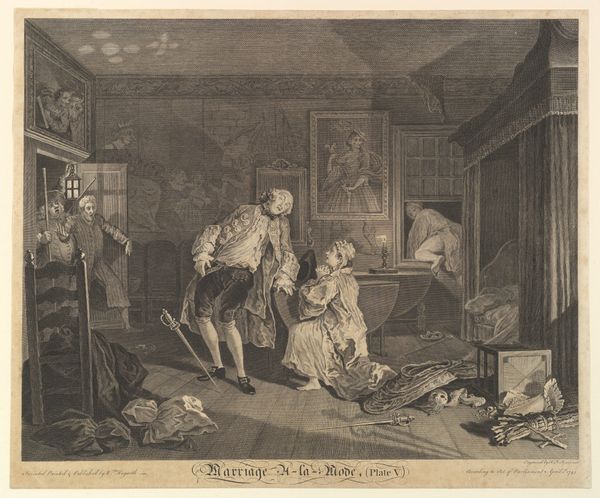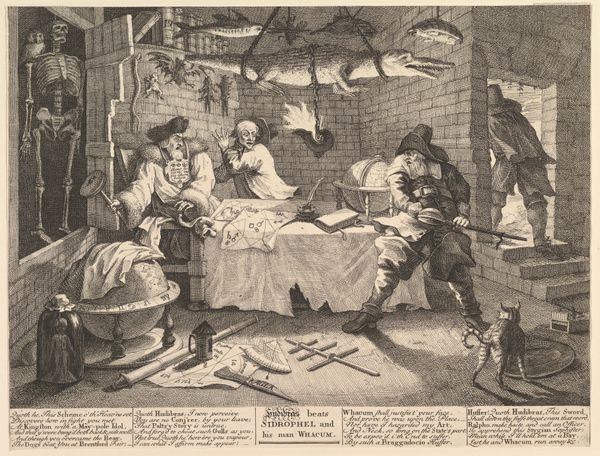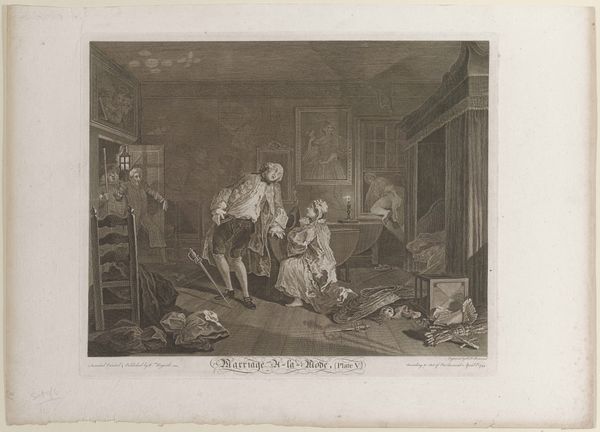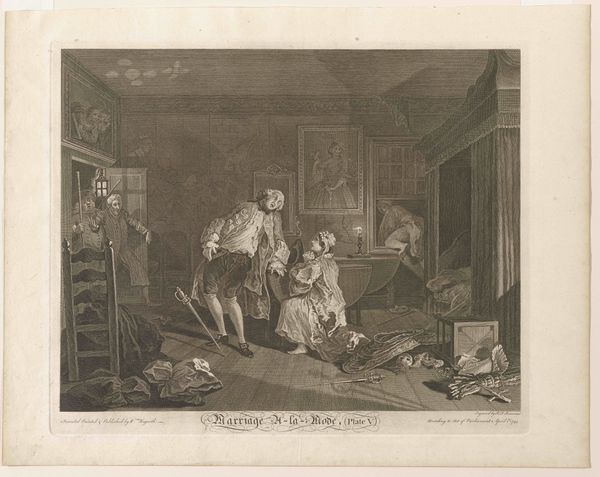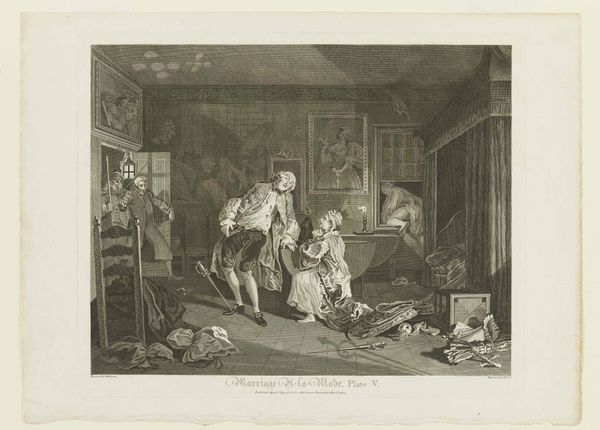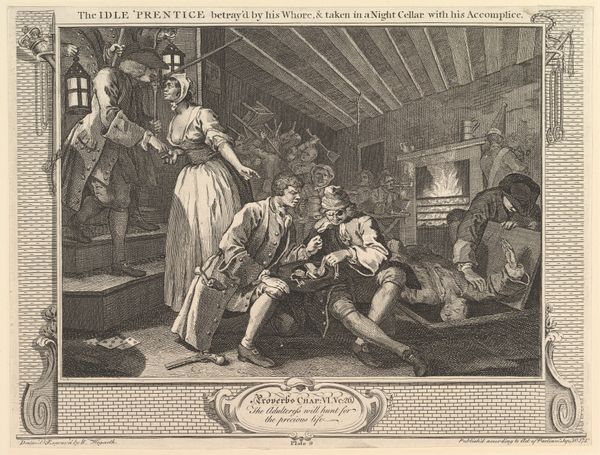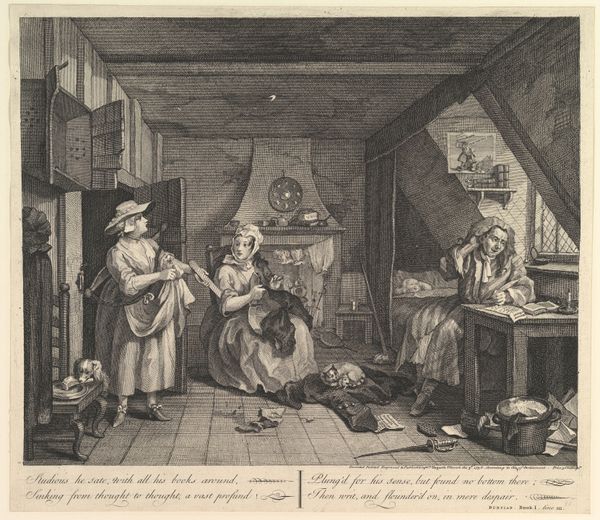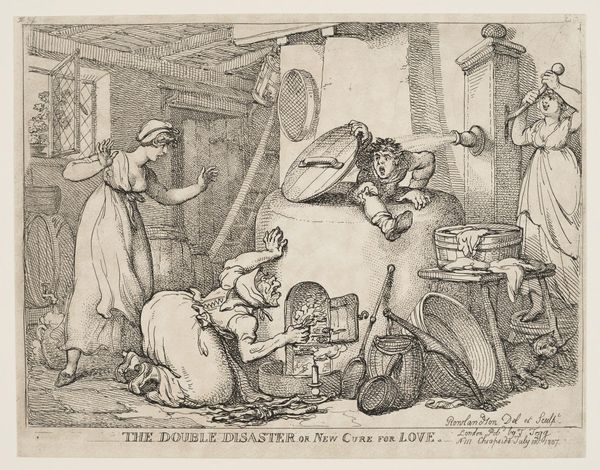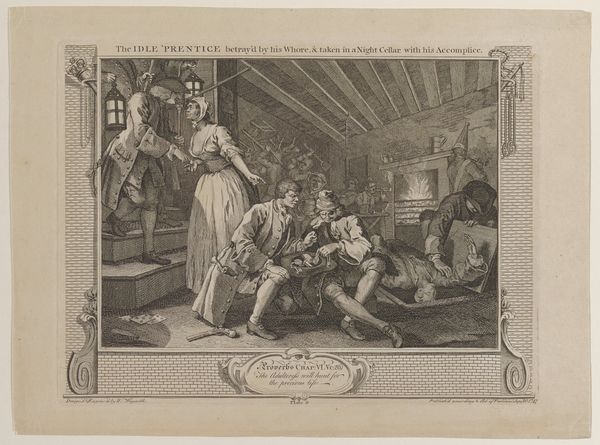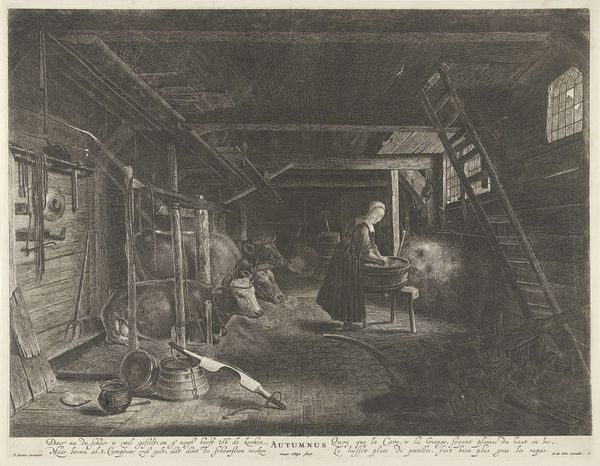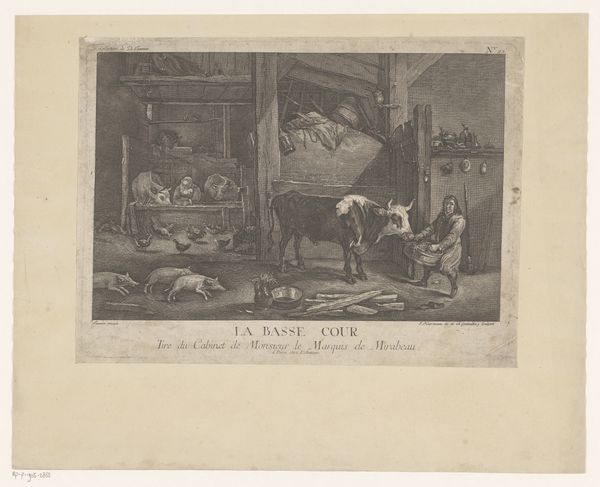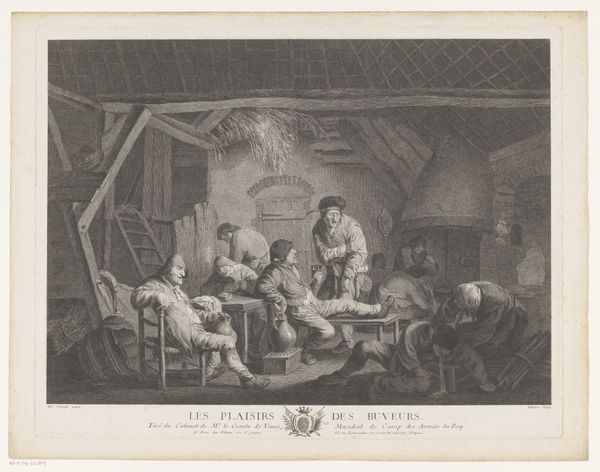
print, etching
#
narrative-art
#
baroque
# print
#
etching
#
caricature
#
genre-painting
#
history-painting
Dimensions: 10 3/8 x 13 11/16 in. (26.35 x 34.77 cm) (sheet)
Copyright: Public Domain
Curator: What strikes you most immediately about this print? It is titled "The Idle Prentice" and was made by William Hogarth in 1747. It is currently housed at the Minneapolis Institute of Art. Editor: The composition is certainly arresting. It’s claustrophobic, yet dramatically lit—like a stage set, really. The figures recoil with such exaggerated gestures. The artist presents them with incredible detail but no generosity. Curator: Indeed, the linear precision achieved through etching emphasizes the squalor and moral decay depicted. Note the carefully constructed geometry—how Hogarth uses perspective to draw our eye directly to the figures and then back into the details of the room. Semiotically, this is dense. Editor: Yes, but beyond the clever arrangement of space, look at the sheer labor involved in creating such a detailed scene through printmaking. Etching involves physical processes; there is biting the plate with acid and working with a press. We must think of the artist's workshop—the smells, tools, and hands that created this image. Furthermore, such scenes are a commentary on labour, so closely linked with material circumstances and the everyday morality of Hogarth's London. Curator: Certainly, there’s a narrative element inextricably tied to its reception. Hogarth meant for this print to be widely distributed and consumed; its meaning is deeply entwined with its social function as a moral lesson aimed at young apprentices. One notices that, despite its small scale, "The Idle Prentice" functions as a sort of history painting in miniature, holding to baroque values through drama and dynamism. Editor: We must see these works within a broader culture of printmaking. Broadsides and cheap prints helped spread visual culture across society, influencing tastes and propagating ideas of labour and social value that resonate powerfully. Moreover, look how much this room reveals; the decay, poverty, and desperation—every object speaks volumes of the material circumstances, like a still life, if not for those animated expressions. Curator: Yes, I agree with the material dimensions, but I’m always drawn to Hogarth’s command of form and his clever use of iconography. I do think formal concerns outweigh its material or historical reception. Editor: I think to deny the historical context and materials from which art emerges, is to do it a real disservice!
Comments
No comments
Be the first to comment and join the conversation on the ultimate creative platform.
